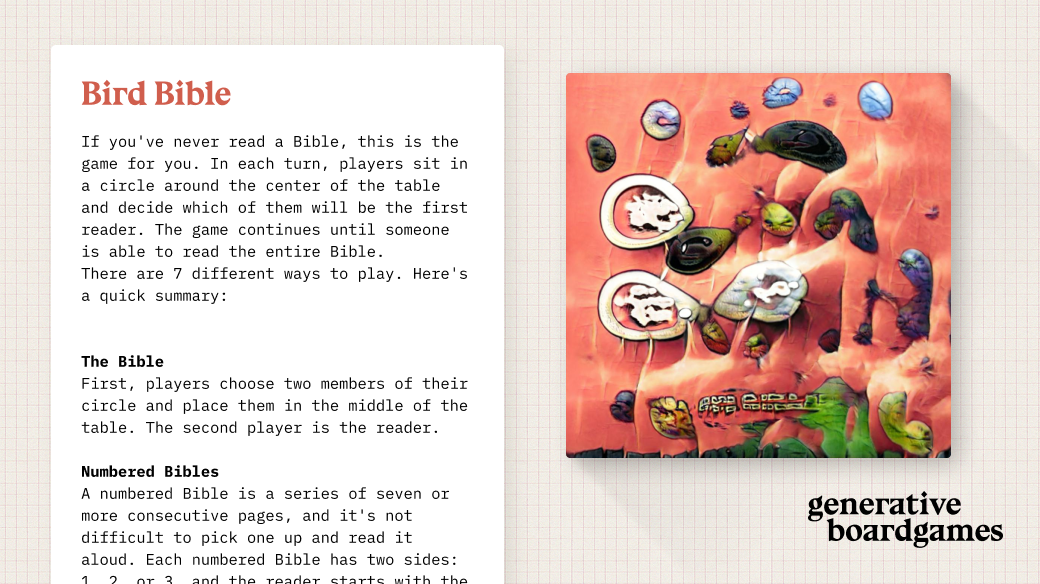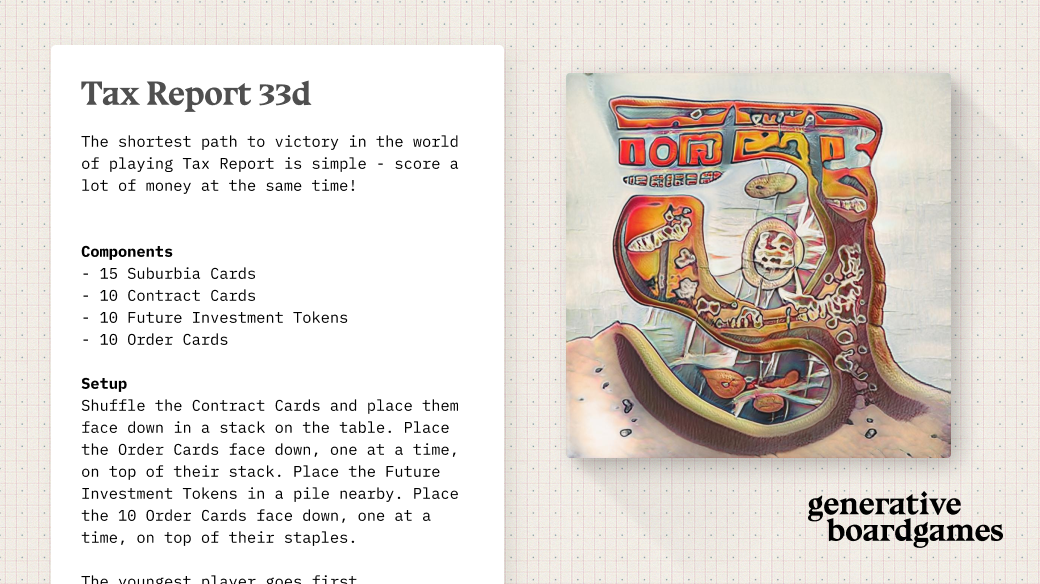Generativeboard.games
A website that uses machine learning to help you generate your own boardgames. Made in collaboration with Florian Porada and Lucas Terra
Using Runway I trained two machine learning models, one for generating boardgame rules and another for box art. We then created a website where you submit the name of a made up game, like “Who sharpened my pencils?” or “Spoonfeeders”, and the rules and box art are then generated from that input.
Florian wrote a great blog post that goes into detail about our process, you should check that out as well!
Since my Unpaid Intern project, I’ve been interested in using generated outputs as a stepping stone, rather than treating them as the end goal of the generative process
I thought that boardgame rules would be interesting because, through trying to play the game, you are forced to actively pay attention to and interact with the structure of whatever has been generated. It makes the output more than a passively experienced tech demo, and hopefully gives the participant a better understanding of the strengths and weaknesses of generative output.
It’s interesting seeing the algorithms attempts at recreating the common elements of a boardgame. For example the cover generator doesn’t know what text is, but it understood that something that looks like text is usually found in the top centre of the box. Likewise the rules don’t have a whole lot of internal logic, but they follow the general structure of how rulebooks are written, with sections like ‘component list’ and ‘game setup’ almost always being included. Unsurprisingly many generated games also end up perpetuating the more trite elements of boardgames, like the tendency to revolve around conquest, colonisation, and making money.
The models are trained using a datset of 2000 boardgame rules, and 15,000 game covers, that I scraped from the internet.
Runway takes existing models (in this case GPT2 for the text, and StyleGAN for the images) and trains on top of them using whatever dataset you give it. The gif above shows the transformation of the StyleGAN model, as it was retrained from creating faces, to creating boardgame art. All this means that you can still see remnants of the original dataset in the images that are generated. In this case, the abstracted shapes of shoulders, necks, and heads are still recognisable in the images on the right hand side.
With Lucas in São Paulo, Florian in Berlin, and me in Copenhagen, it was nice to use this project as an opportunity to interact with friends that I don’t get to see very often.
We always saw this as a fun side project, so we are still trying to work out what our next steps are, and how we would want to develop the project. Personally, I am interested in doing the hard work of creating a physical game out one of the generated rules.
In practice, this will involve creating a game from scratch, as the rules mention cards, components, and assets that don’t actually exist, so we’ll have to create all that ourselves. Similarly the current generated rules don’t result in a playable game, only in a some text that has the outward appearance of being a playable game, so we’d have to do a whole lot of editing there too. But I like this element of reinterpretation, it means that even if two people have the same rules, their interpretation of these rules will result in completely different games.











